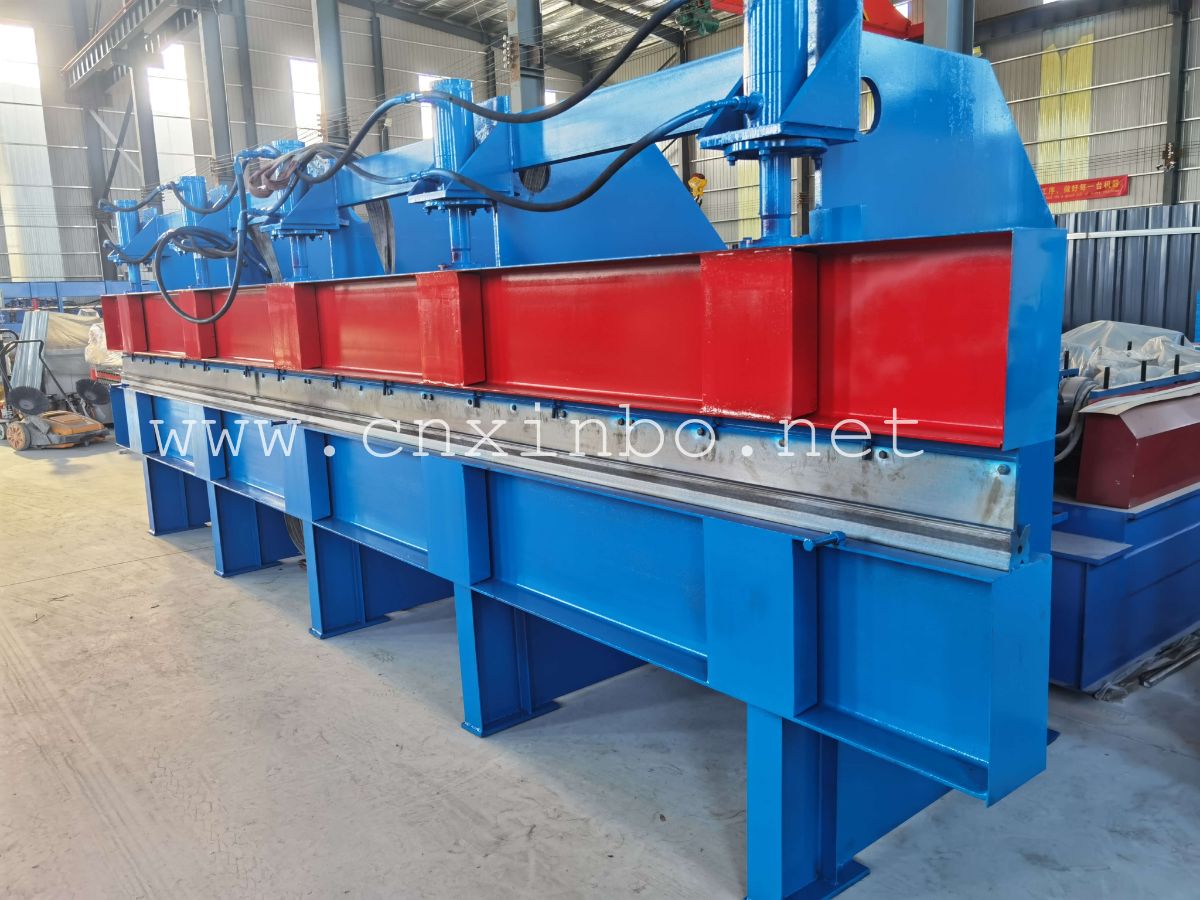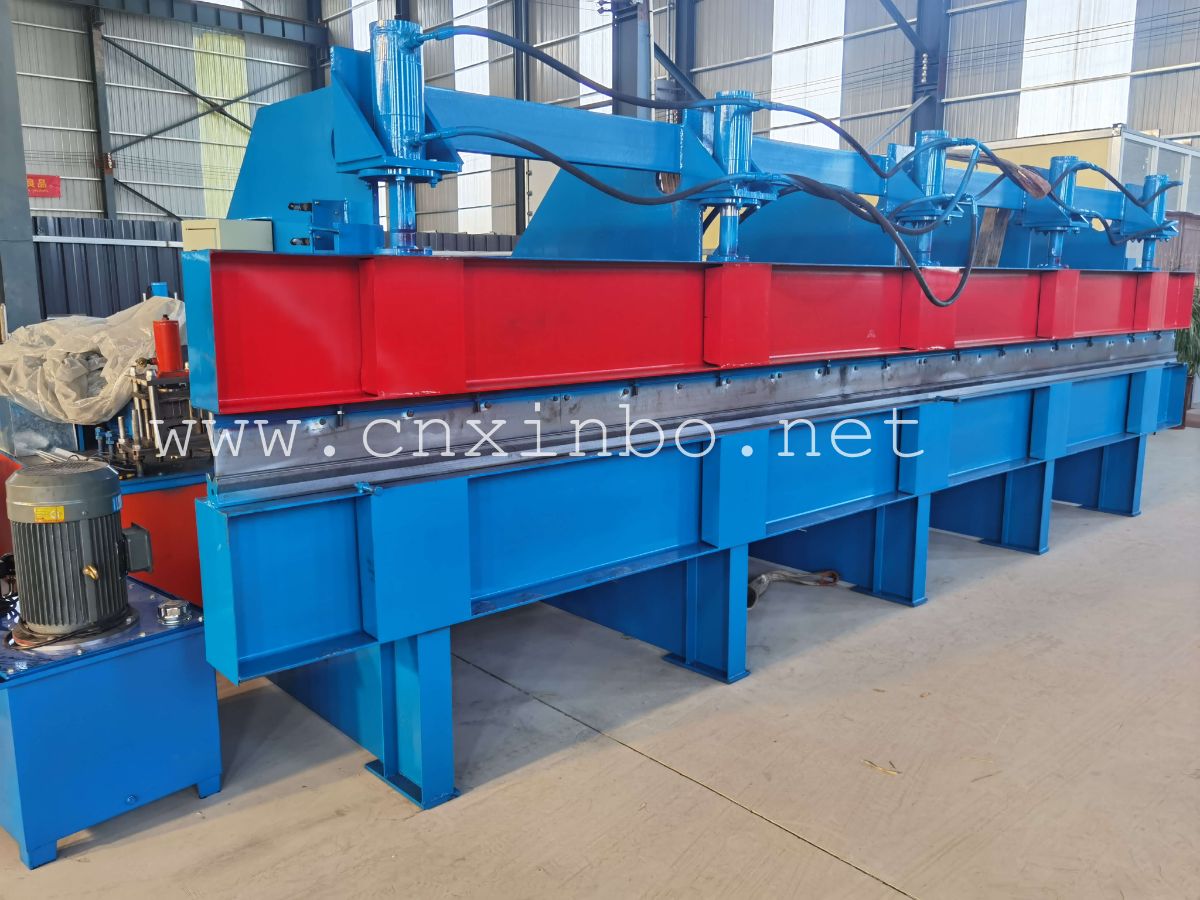Good quality
XinBo machine making CO. LTD is a professional manufacturer and exporter in roll forming machine,
VIEW MORE→Metal bending is a fundamental technique in fabricating various metal structures. It involves deforming a metal workpiece by applying force to achieve a desired shape or angle. The process is crucial in manufacturing parts for automotive, aviation, construction, and numerous other industries. Understanding the basics of metal bending is essential for selecting the appropriate method and machinery for specific applications. Precise control over the bending process ensures the structural integrity and desired properties of the final product.
Metals are commonly bent to suit a range of properties and applications. Notable among these metals are steel, aluminum, copper, and brass. Steel, renowned for its strength and durability, is predominantly employed in the construction and automotive industries. Aluminum’s lightweight nature and resistance to corrosion make it ideal for aerospace and marine components. Copper and brass feature prominently in electrical systems and decorative items due to their superior conductivity and aesthetic qualities. Each type of metal necessitates distinct bending techniques and specialized equipment to ensure optimal performance outcomes.
XINBO is a company that prides itself on providing excellent custom services to its customers. With a team of professional engineers and designers, XINBO is able to quickly and accurately design detailed drawings according to the specific needs and requirements of its customers. This ensures that the final product matches the desired profile and specifications.
A Hydraulic Bending Machine is a powerful tool designed to bend metal with the help of hydraulic pressure. These machines use hydraulic cylinders to apply force to a metal workpiece, making it easier to bend even the toughest materials with high precision. The hydraulic mechanism provides a consistent and repeatable force, ensuring uniform bends across multiple parts. Hydraulic bending machines are versatile and can handle a wide range of metal thicknesses and bending angles, making them suitable for various industrial applications.
The Hydraulic Bending Machine‘s versatility allows it to be used in multiple industries for numerous applications. In the automotive sector, these machines are crucial for manufacturing exhaust systems, chassis components, and intricate metal parts. The construction industry utilizes hydraulic benders for creating structural elements like beams and frames. In the aerospace industry, they are employed to fabricate aircraft components with high precision. The machine’s ability to handle both simple and complex bends makes it indispensable in diverse fields, ensuring efficiency and accuracy in production processes.

Hydraulic bending machines come in different configurations, primarily classified as manual and CNC (computer numerical control). Manual hydraulic bending machines require an operator to manually set the machine parameters and guide the workpiece through the bending process. They are cost-effective solutions for simple bending tasks and are commonly used in smaller workshops.
On the other hand, CNC hydraulic bending machines utilize computer systems to control the bending process. They offer high precision and automation, making them ideal for mass production and complex bending operations. With CNC machines, operators can program the bending sequence, angles, and other parameters, ensuring consistency and reducing human error. Although CNC machines have a higher initial cost, their efficiency and accuracy provide a significant return on investment for large-scale industrial applications.
Hydraulic bending machines can also be categorized based on the type of materials they are designed to bend. Plate hydraulic benders are specifically built to bend flat metal plates. They are used for forming metal sheets into various shapes and angles required in structural and architectural applications. Plate benders are essential in industries where the bending of large, flat surfaces into uniform shapes is required.
Tube hydraulic benders, however, are designed to bend cylindrical tubes and pipes. These machines are crucial in industries such as automotive, plumbing, and HVAC systems, where tubing must be formed into specific angles and radii. Tube benders allow for the precise bending of pipes without causing deformities or weakening the material, thus maintaining the integrity of the workpiece.
The operation of a hydraulic bending machine begins with proper setup. First, the machine must be calibrated according to the material type and thickness to be bent. This involves setting the hydraulic pressure, bending radius, and angle adjustments. Ensuring that the machine is equipped with the correct tooling, such as dies and clamps, is also crucial for a successful bending operation.
Once the machine settings are configured, the workpiece is loaded into the machine. It is essential to secure the metal piece firmly to prevent any movement that could affect the bending accuracy. Safety measures, such as wearing protective gear and ensuring the machine is in good working condition, are necessary to avoid accidents.
With the machine set up, the bending process proceeds through a series of steps. First, the machine applies hydraulic pressure to the workpiece using the hydraulic cylinders. This pressure forces the metal to conform to the shape of the die, creating a bend. For manual machines, the operator guides the workpiece throughout the process to achieve the desired angle.
In CNC hydraulic bending machines, the programmed instructions take over, automatically positioning the workpiece and applying the necessary force. The machine executes the bending sequence with high precision, ensuring consistent results for each piece. Once the bending is complete, the workpiece is carefully removed from the machine, and the quality of the bend is inspected.
One of the primary advantages of hydraulic bending machines is their ability to provide enhanced precision and consistency. The hydraulic system delivers a uniform force, reducing the chances of errors and inconsistencies in the bends. CNC hydraulic bending machines further improve accuracy by automating the bending process, ensuring each part is identical to the last.
This high level of precision is particularly critical in industries where even minor deviations can result in significant issues, such as aerospace and automotive manufacturing. By maintaining consistent quality, hydraulic bending machines help in reducing waste and improving overall product reliability.
Hydraulic bending machines also contribute to increased efficiency and cost savings in metal fabrication processes. The automation capabilities of CNC machines allow for faster production cycles, reducing the time required to complete bending tasks. This speed and efficiency translate into higher throughput and the ability to meet tight production deadlines.
Additionally, the consistency and precision provided by hydraulic bending machines minimize material wastage, further lowering production costs. Although the initial investment in hydraulic bending equipment can be substantial, the long-term benefits in terms of efficiency, reduced labor costs, and material savings make them a cost-effective solution for industrial metal bending.

To ensure the longevity and optimal performance of hydraulic bending machines, routine maintenance is essential. Regular inspection of the hydraulic components, such as cylinders, hoses, and seals, helps detect and address any potential issues before they escalate. Lubrication of moving parts and checking the hydraulic fluid levels are crucial maintenance tasks that keep the machine operating smoothly.
Cleaning the machine after each use to remove metal shavings and debris prevents damage to the components and ensures a clean working environment. Regularly calibrating the machine and updating the CNC software, if applicable, are also necessary to maintain accuracy and reliability.
Despite regular maintenance, hydraulic bending machines may encounter common issues that require troubleshooting. Hydraulic leaks, for example, can occur due to worn seals or damaged hoses. Identifying and replacing the damaged components promptly is crucial to prevent further damage and maintain hydraulic pressure.
Inconsistent bending results can be another common problem, often caused by incorrect machine settings or worn-out tooling. Ensuring the machine is properly calibrated and using the appropriate dies and clamps can resolve this issue. Additionally, monitoring the hydraulic system for any unusual noises or vibrations can help identify underlying problems that need immediate attention.

The field of hydraulic metal bending is continually evolving, with several innovations on the horizon aimed at enhancing efficiency and precision. Advancements in automation and smart technology are expected to play a significant role in the future of hydraulic bending machines. Integration of IoT (Internet of Things) and AI (Artificial Intelligence) can lead to smarter machines that can predict maintenance needs and optimize bending processes in real-time.
Another exciting trend is the development of eco-friendly hydraulic fluids and energy-efficient hydraulic systems. These innovations are designed to reduce the environmental impact of hydraulic bending operations and contribute to sustainable manufacturing practices. As technology continues to advance, hydraulic bending machines will become even more versatile, precise, and efficient, meeting the evolving needs of various industries.
XINBO also values timely delivery. By handling the designing and CNC machining processes in-house and ensuring that all steps are synchronized, they are able to deliver each machine within a short timeframe. This commitment to short delivery times ensures that customers receive their products promptly.

XinBo machine making CO. LTD is a professional manufacturer and exporter in roll forming machine,
VIEW MORE→

